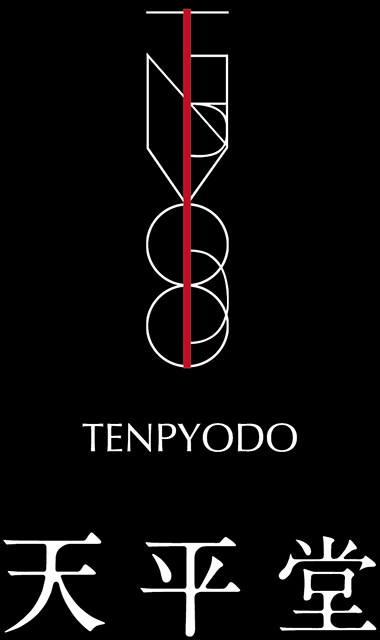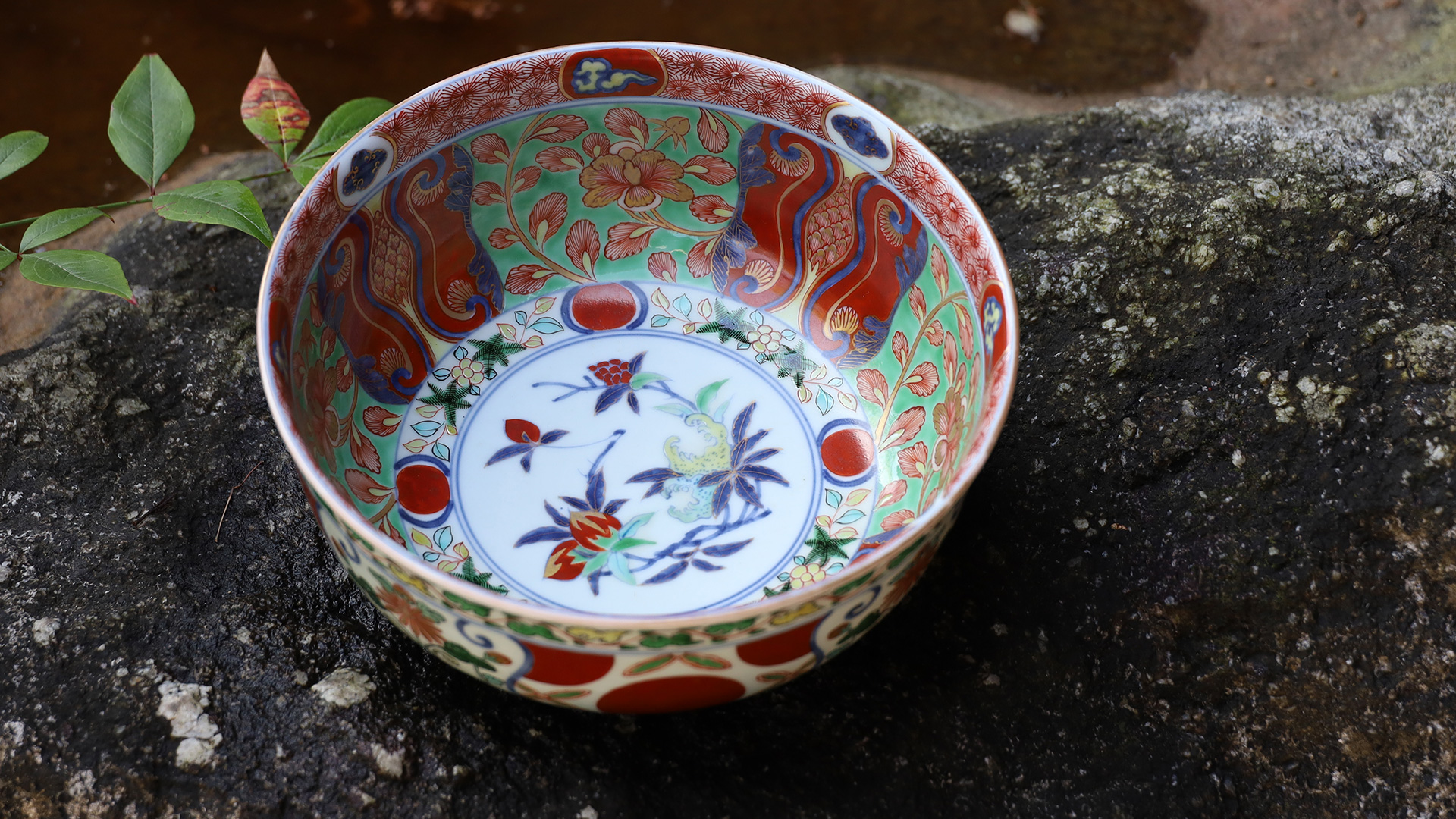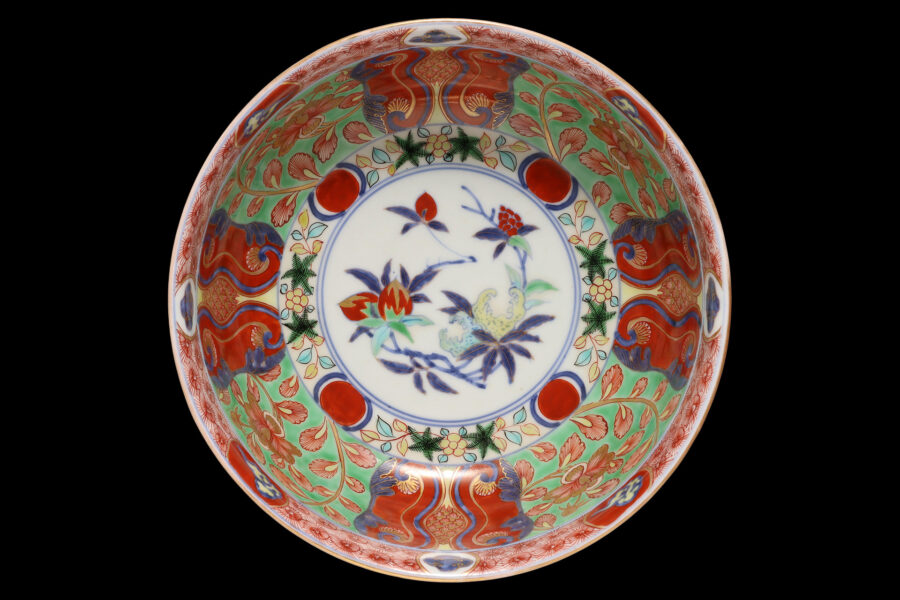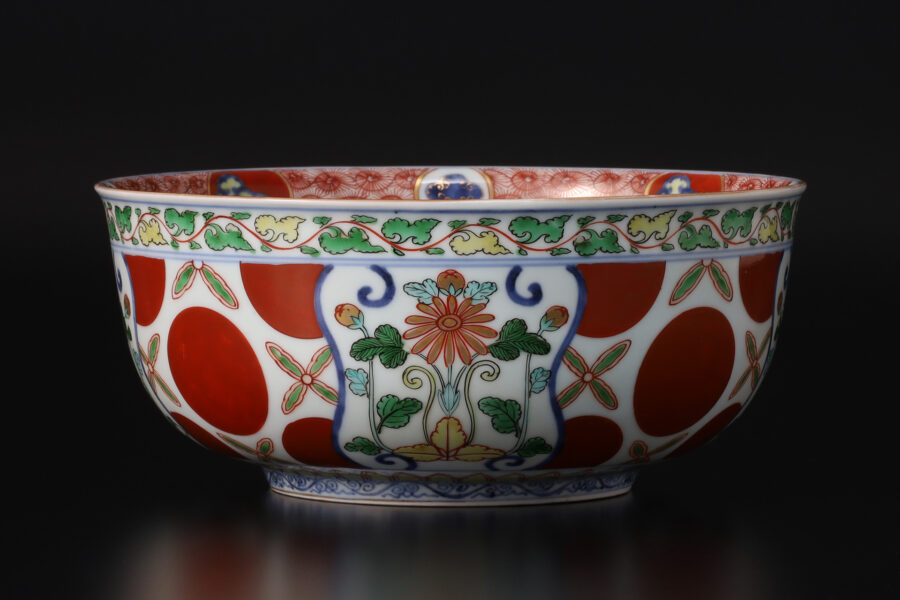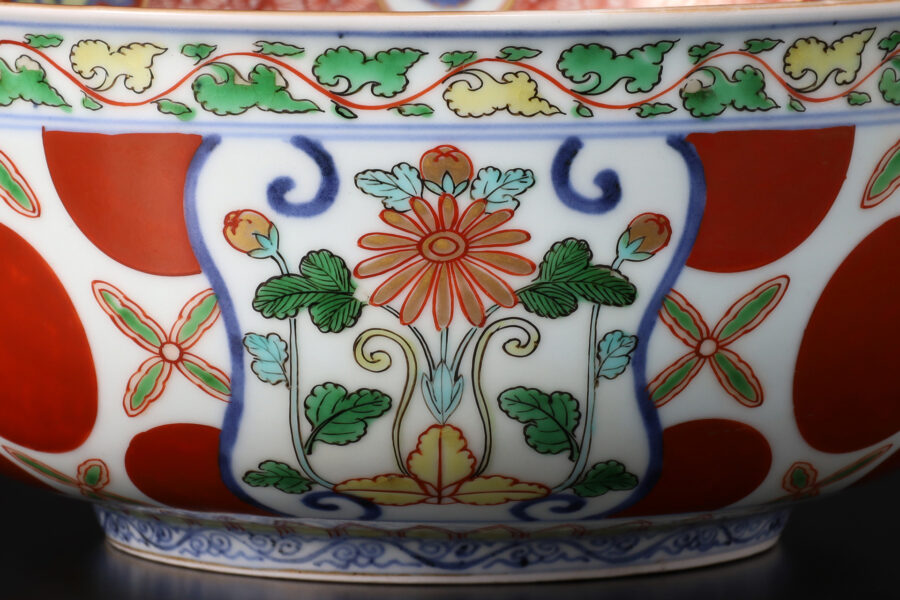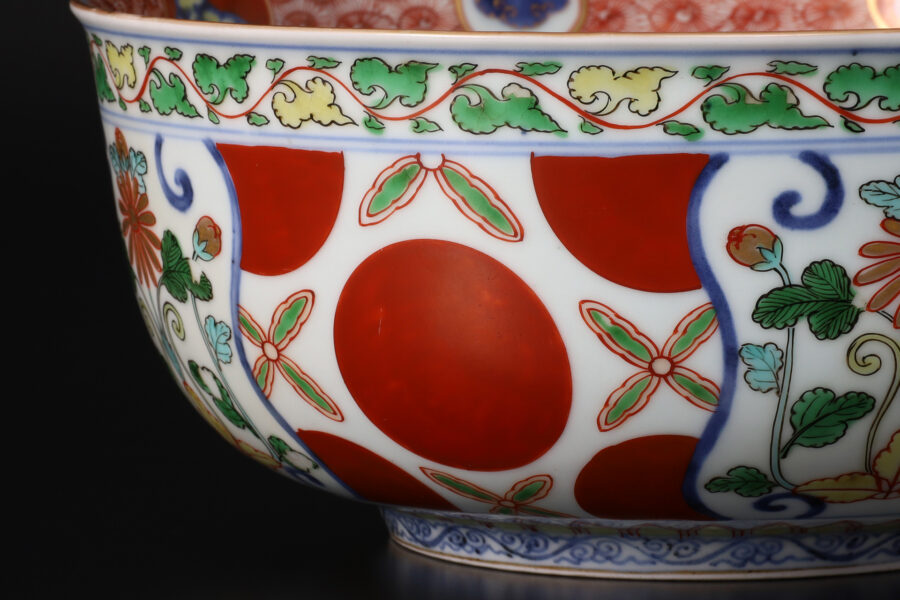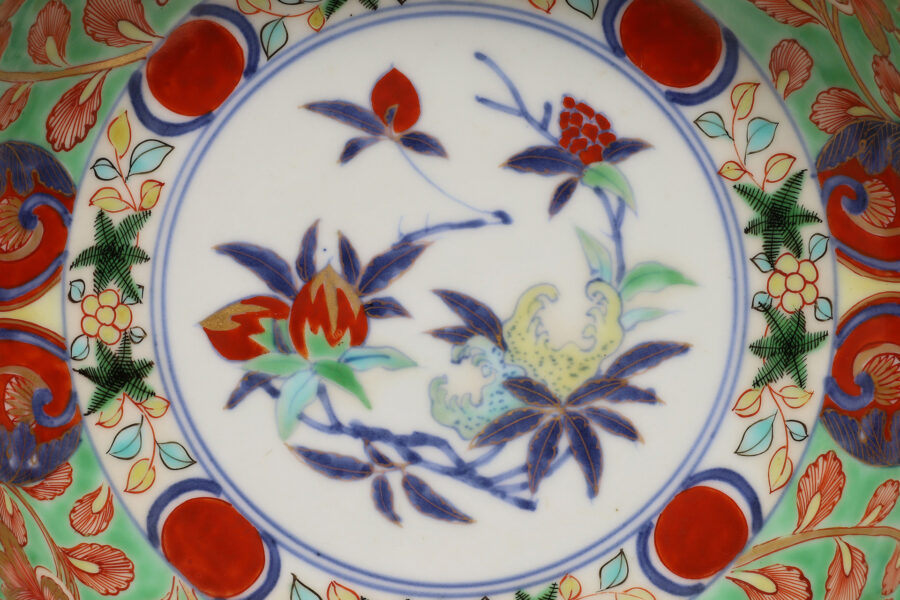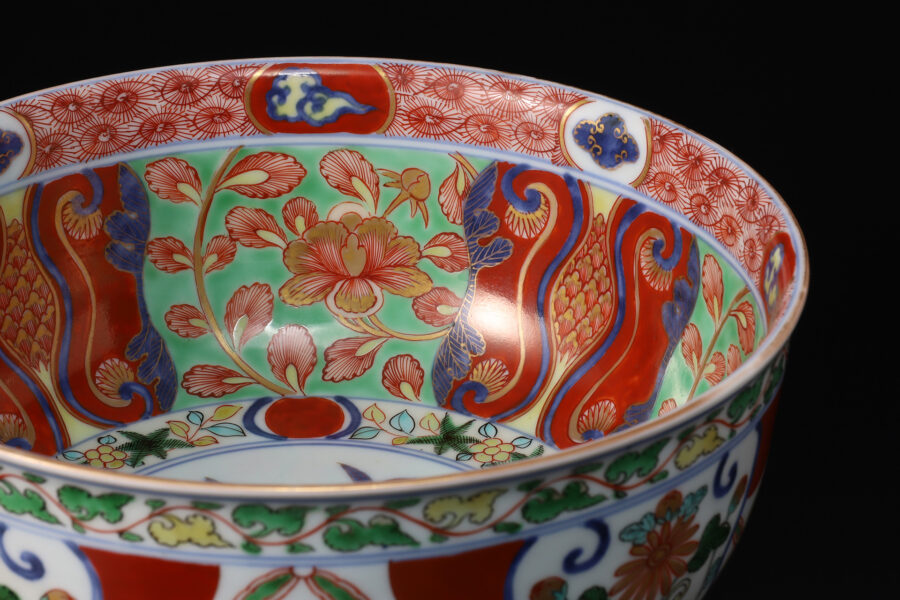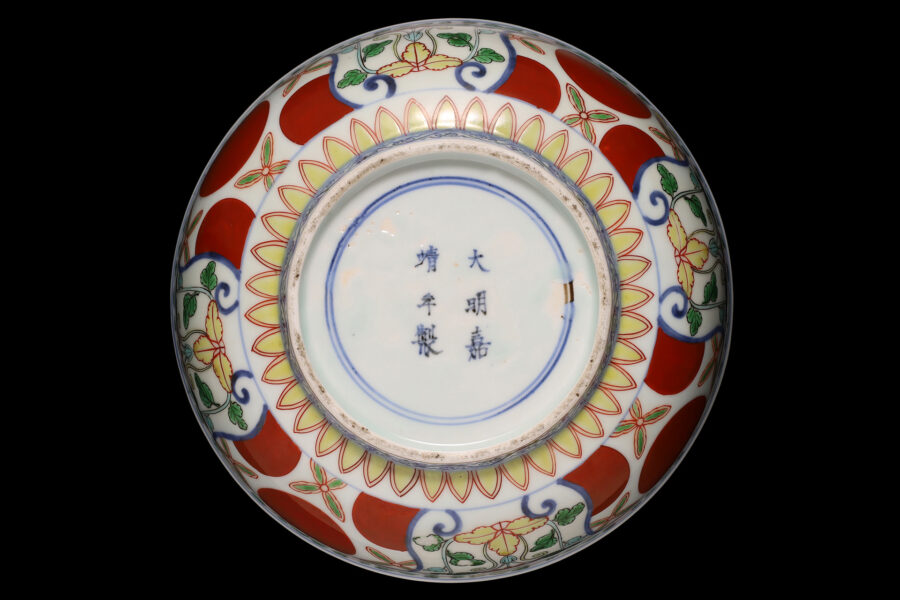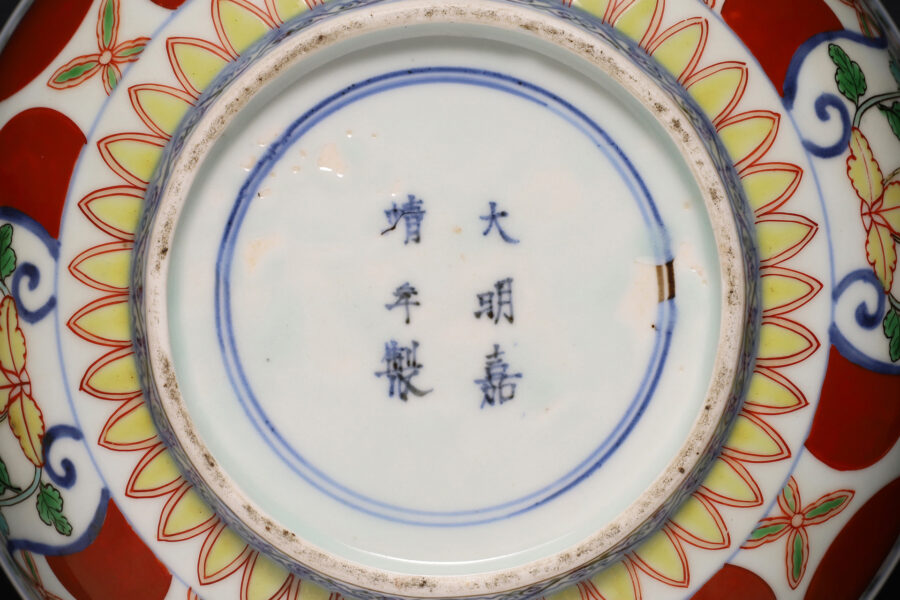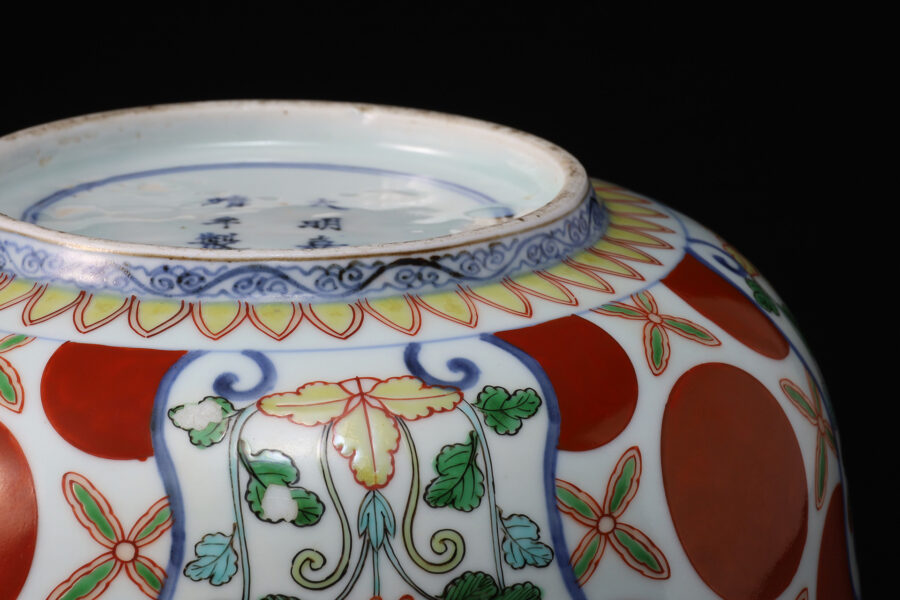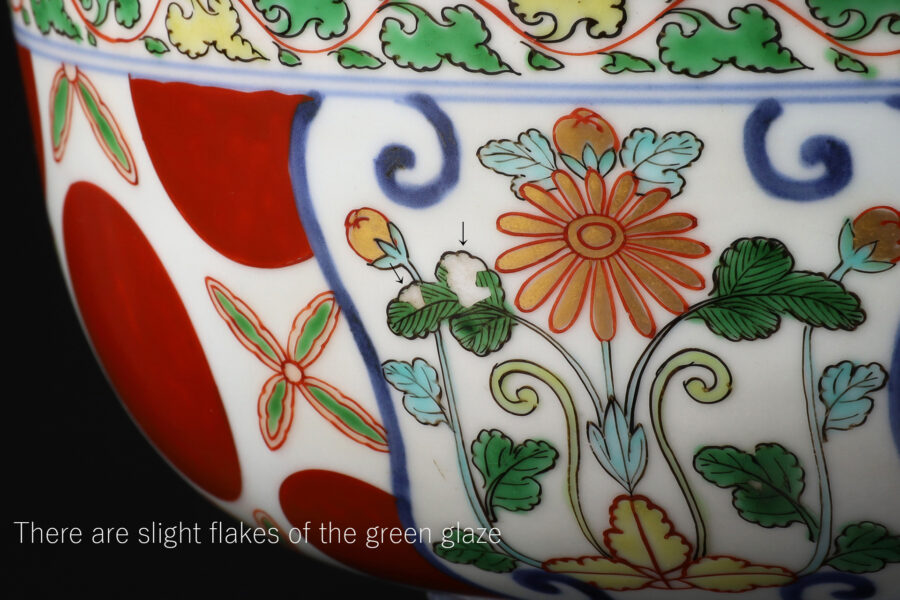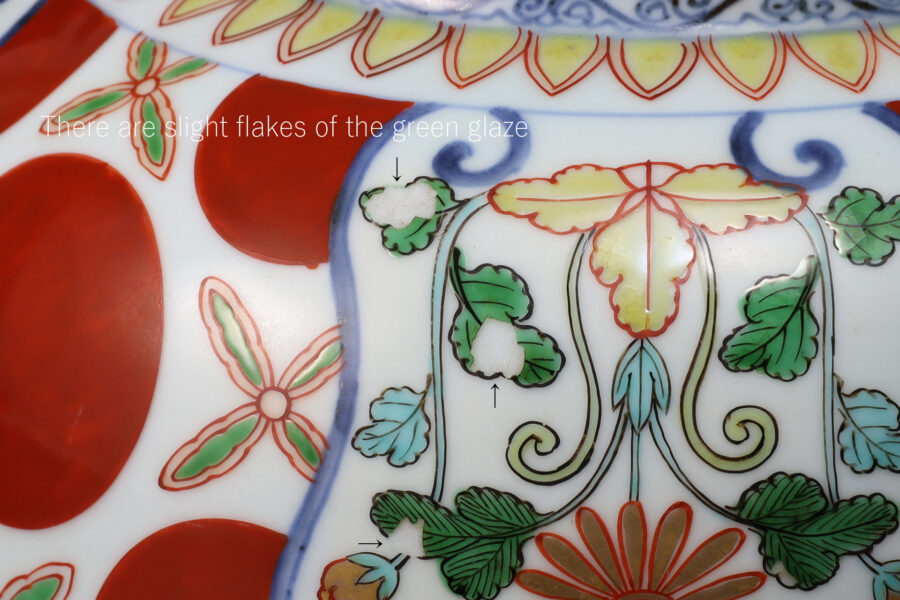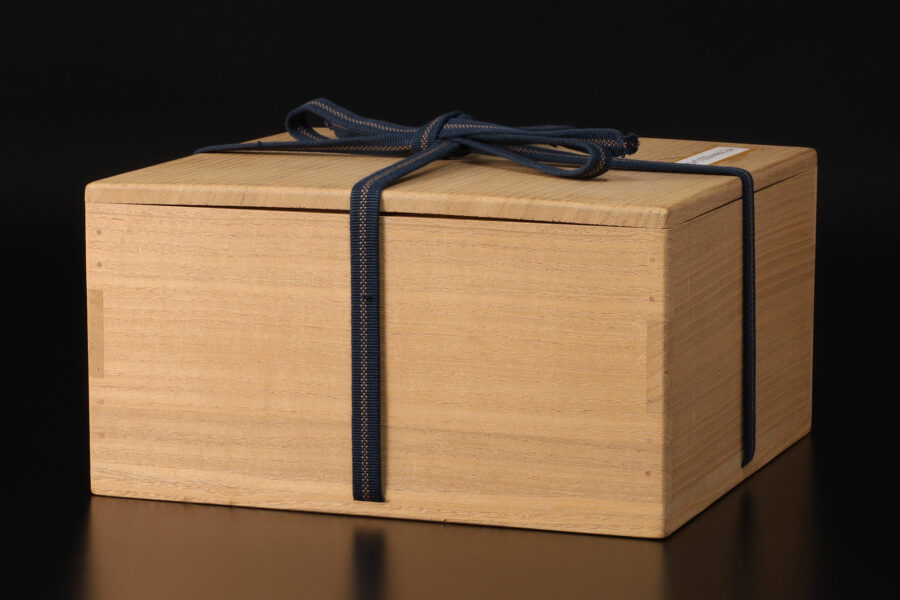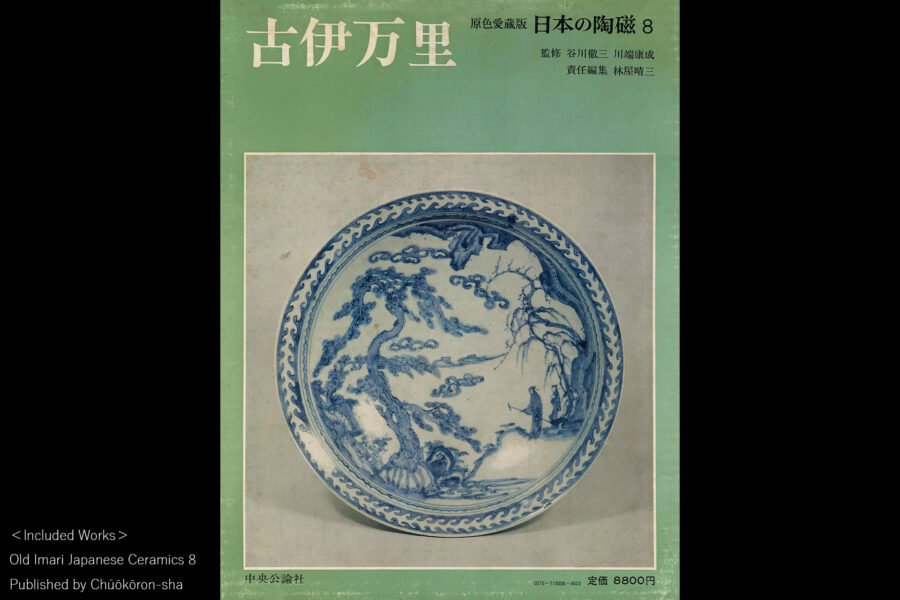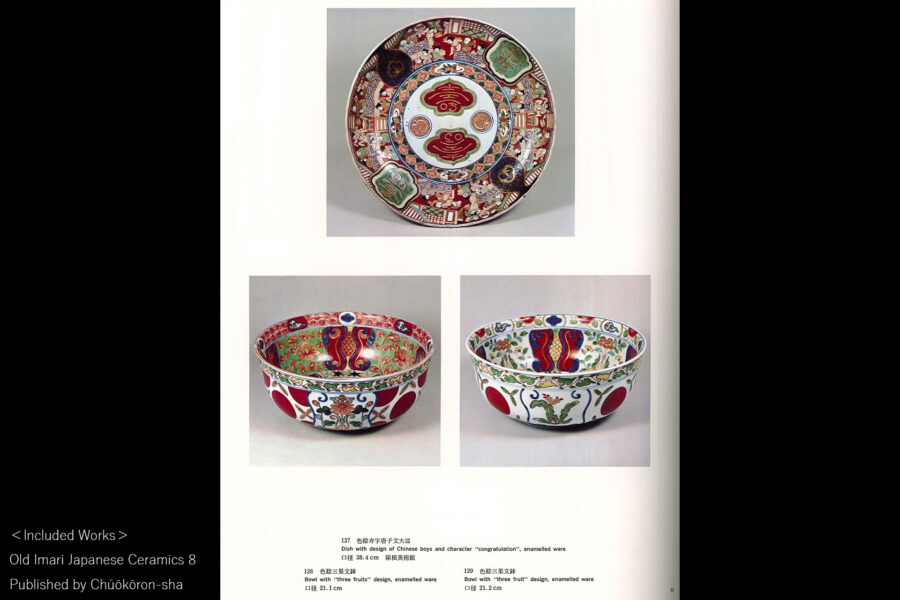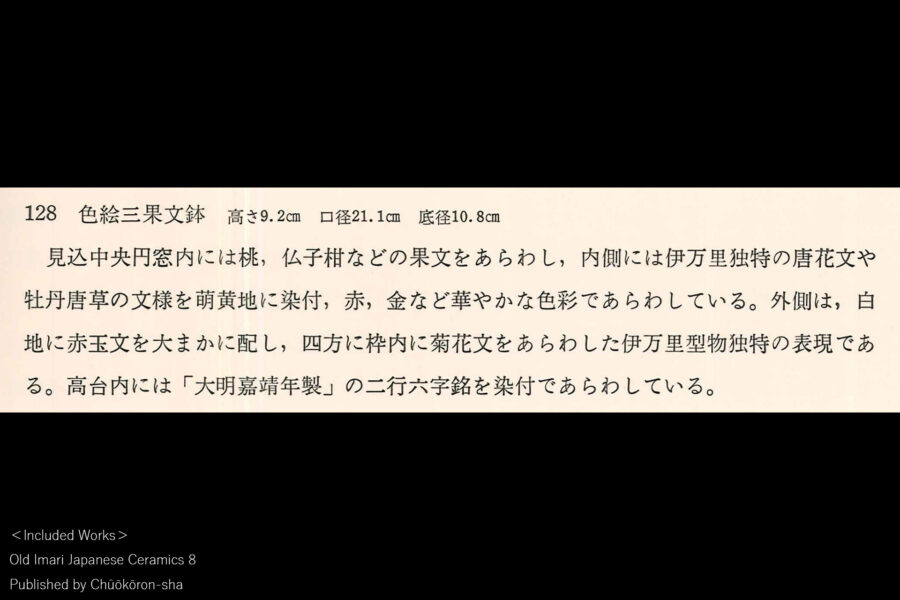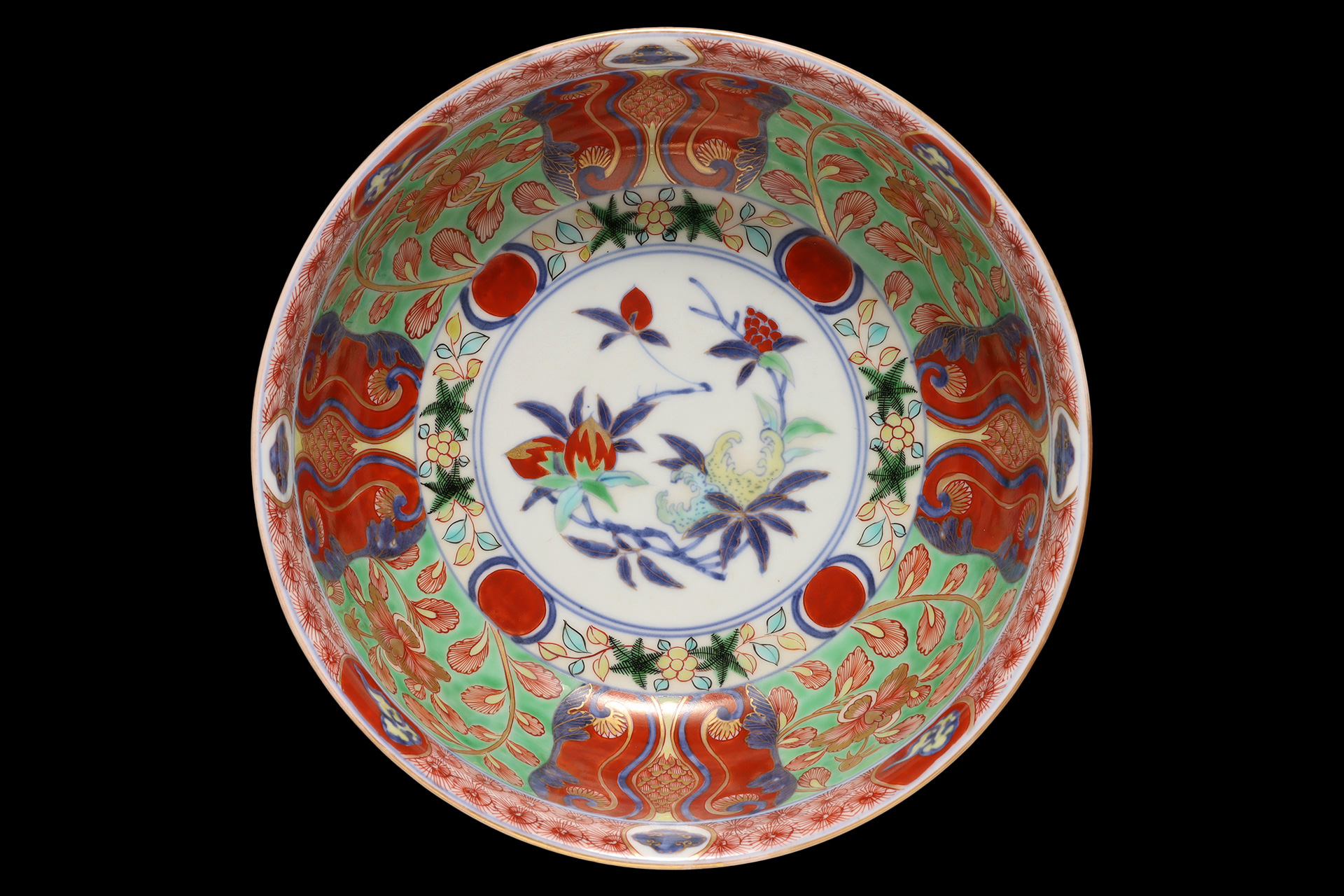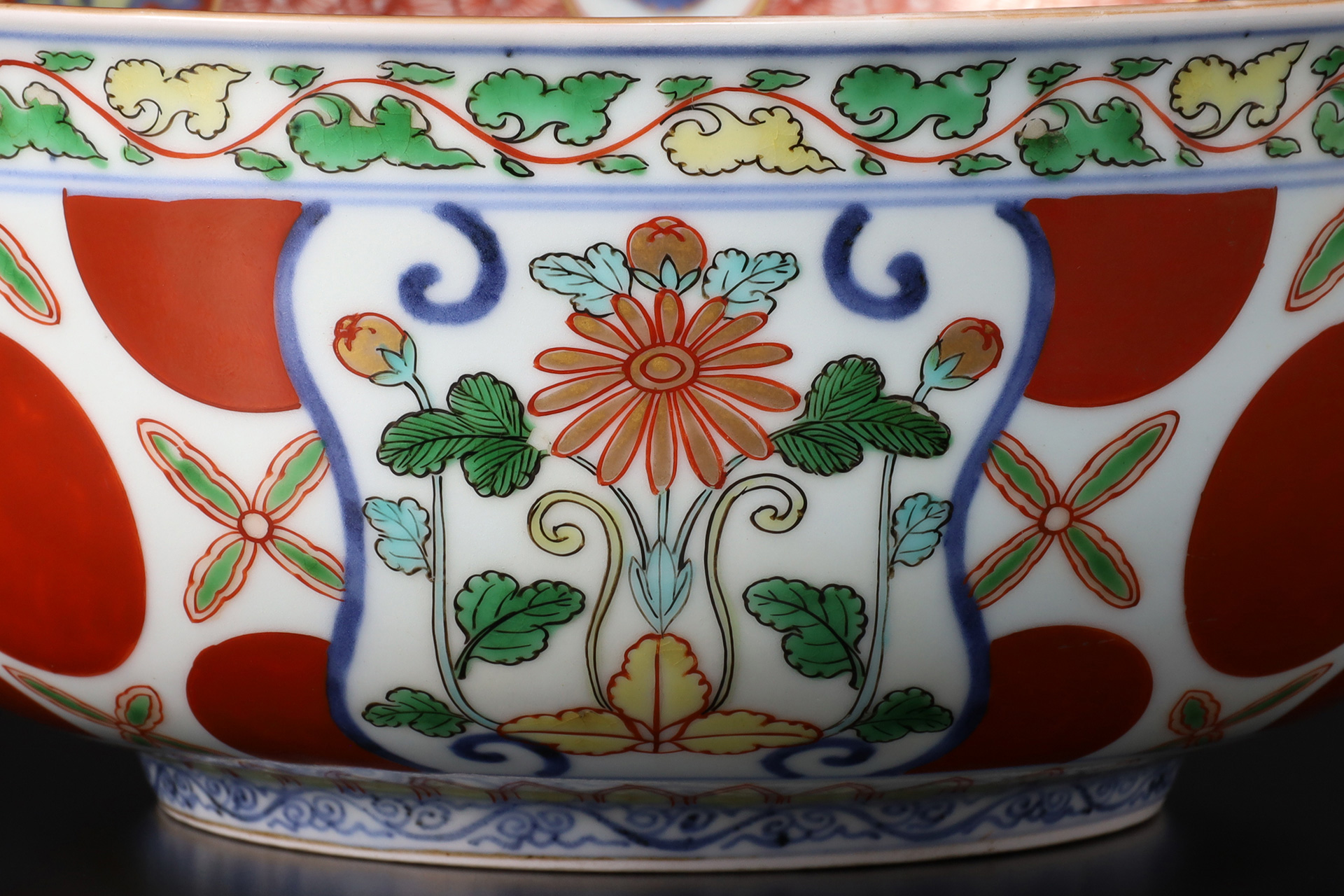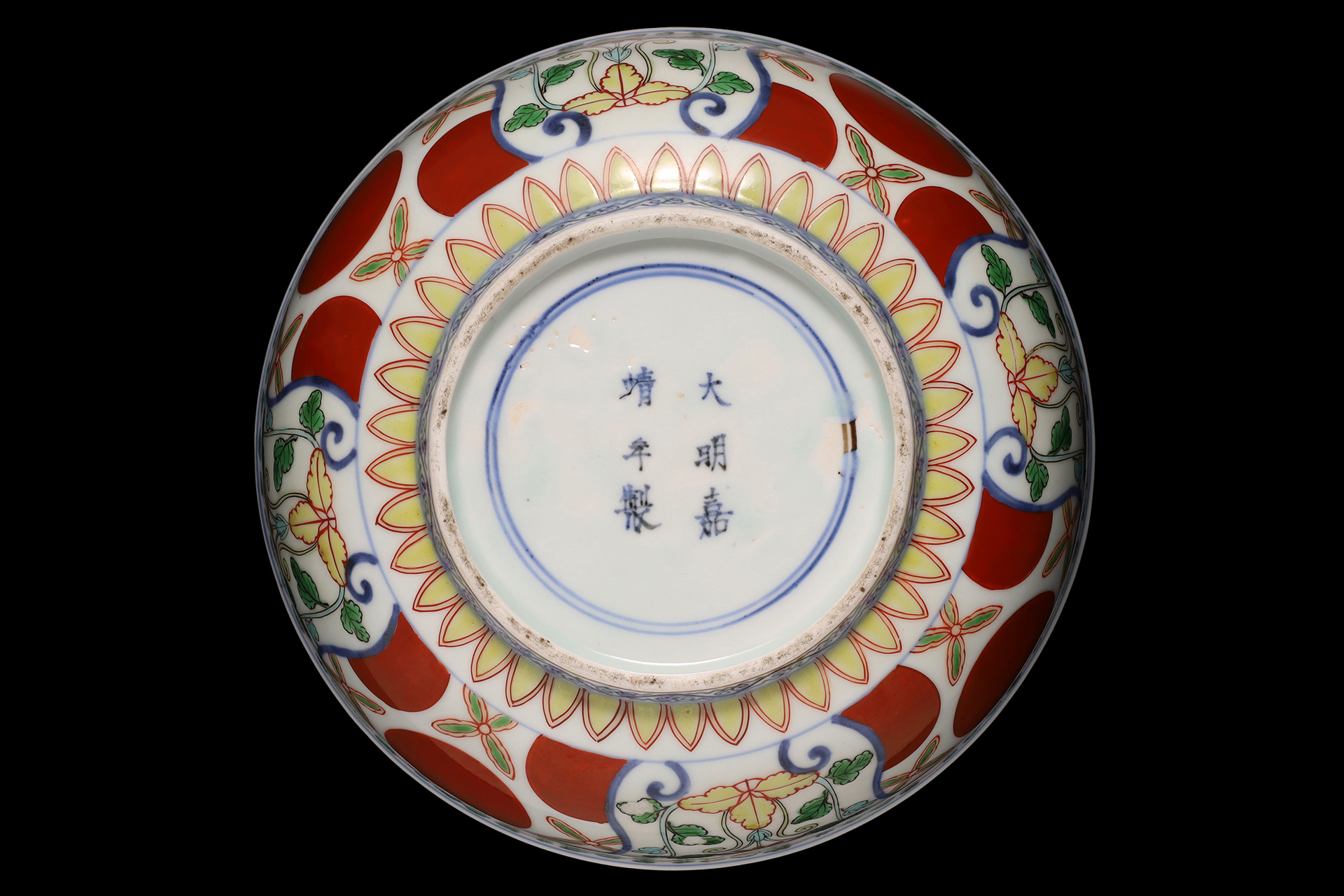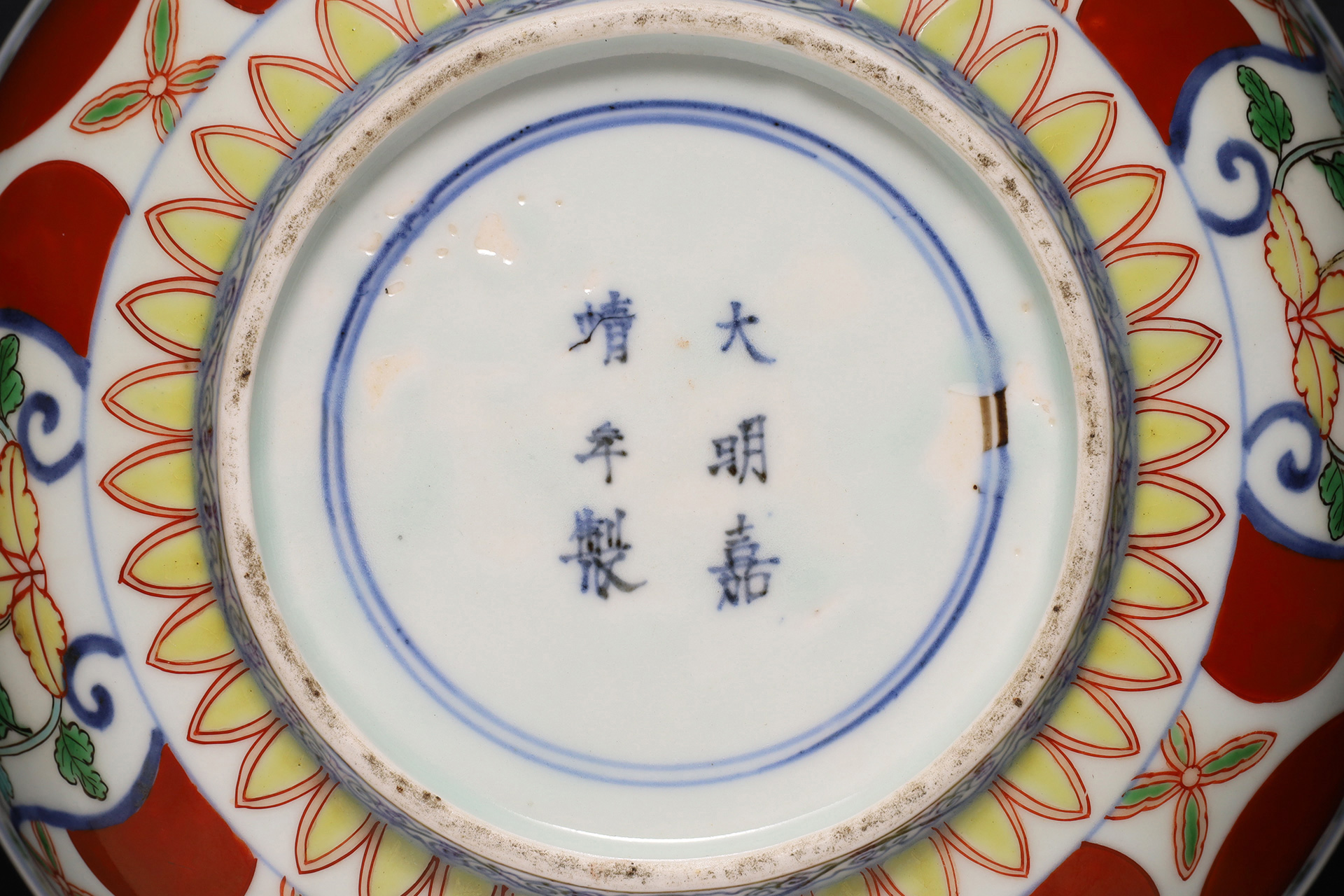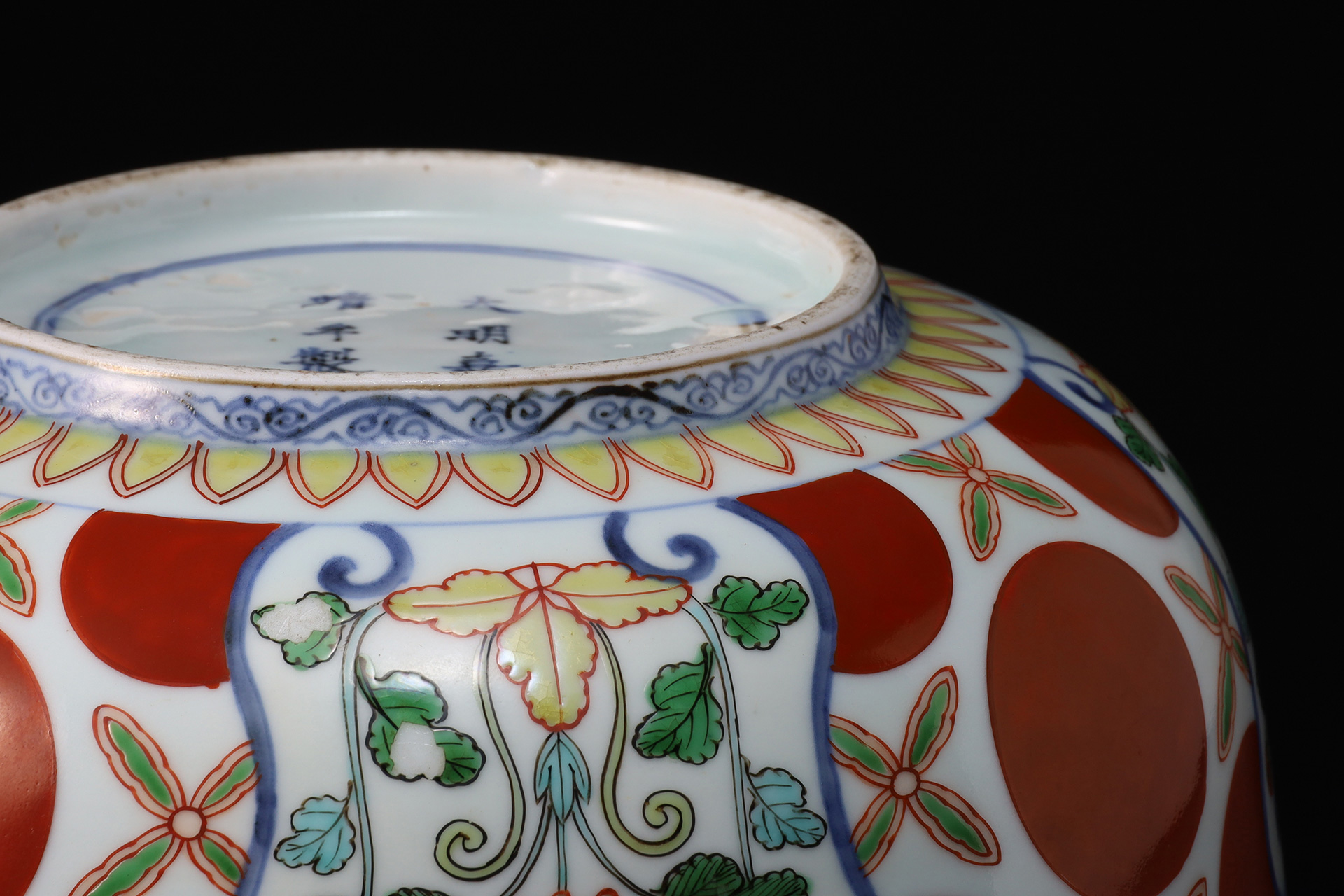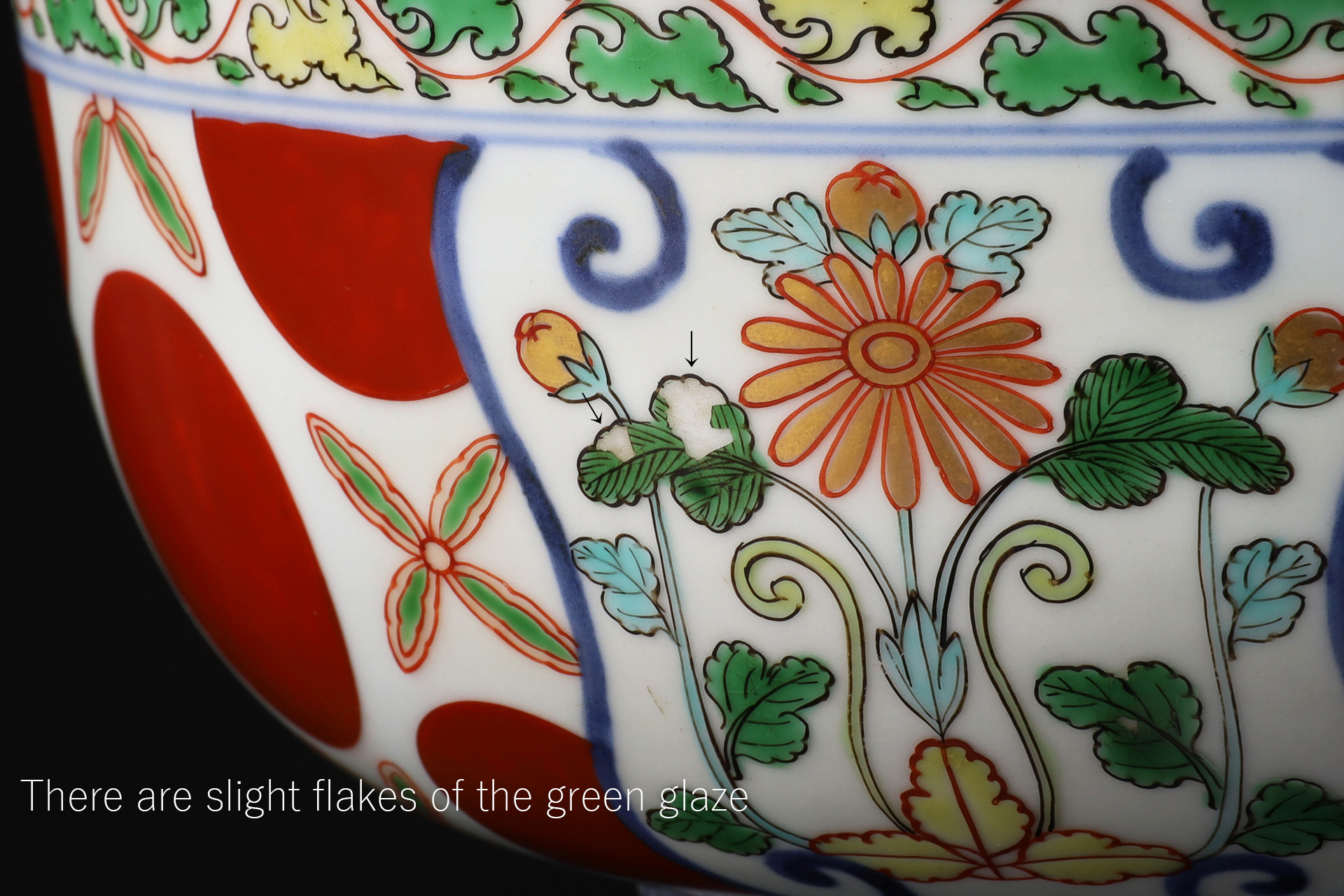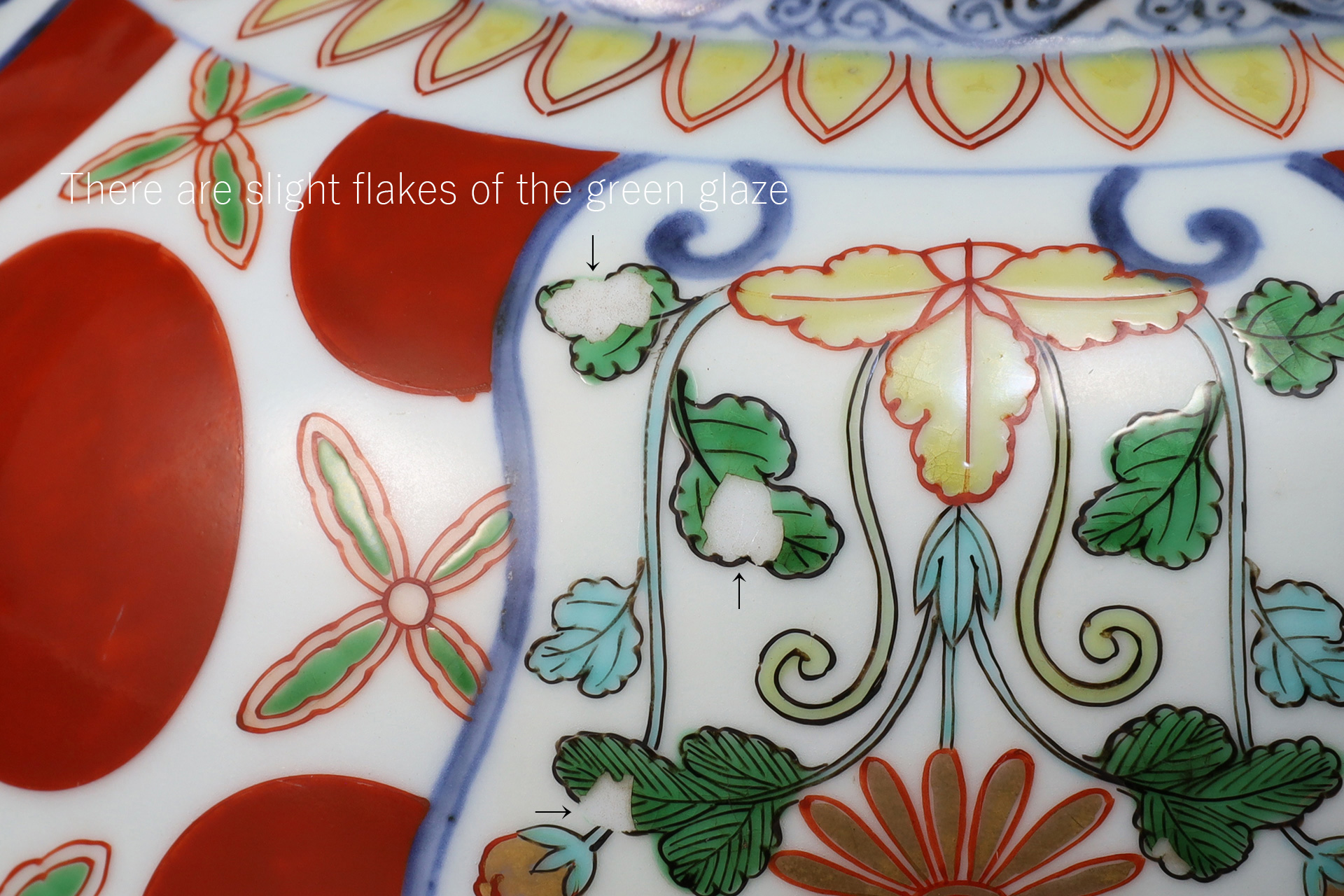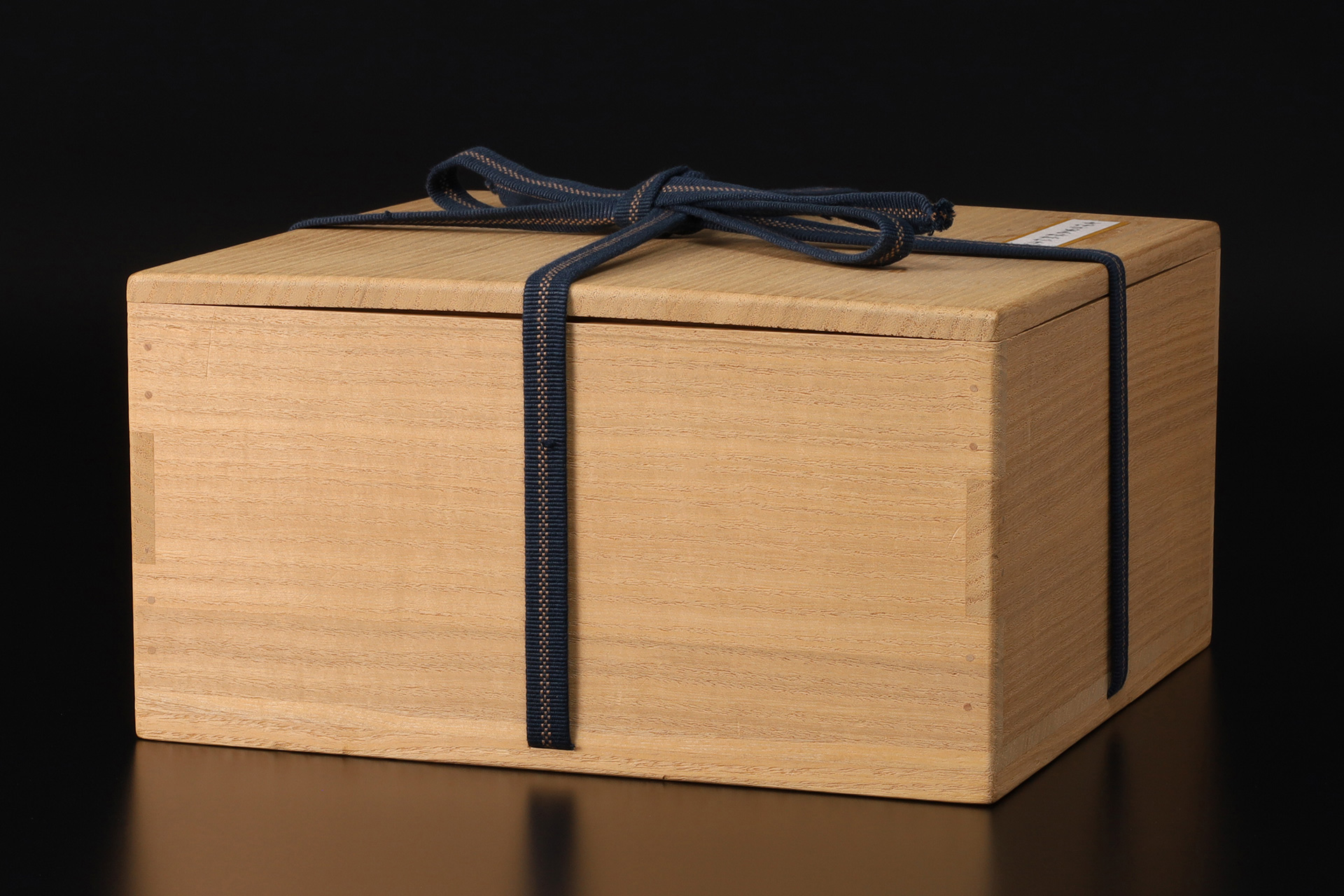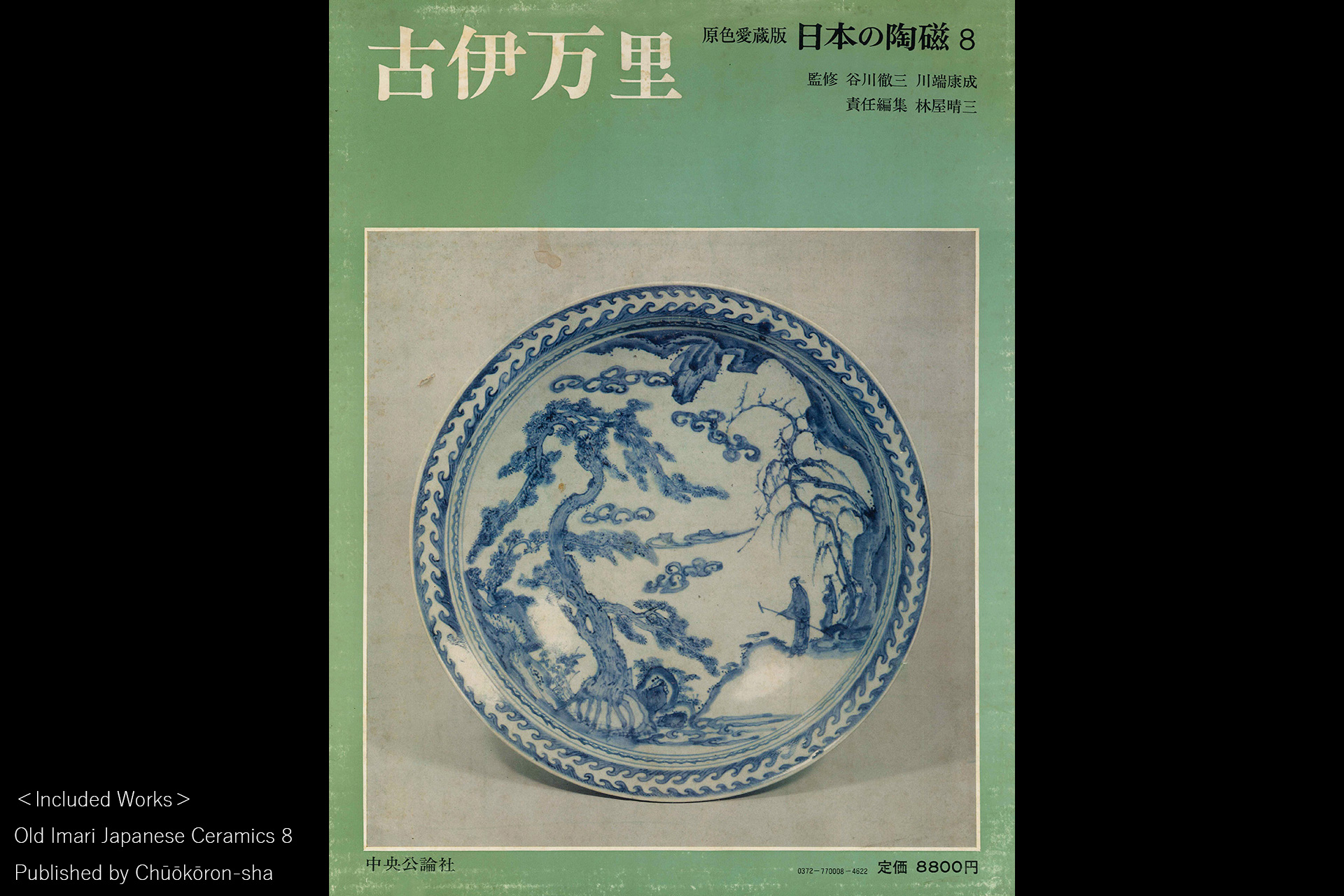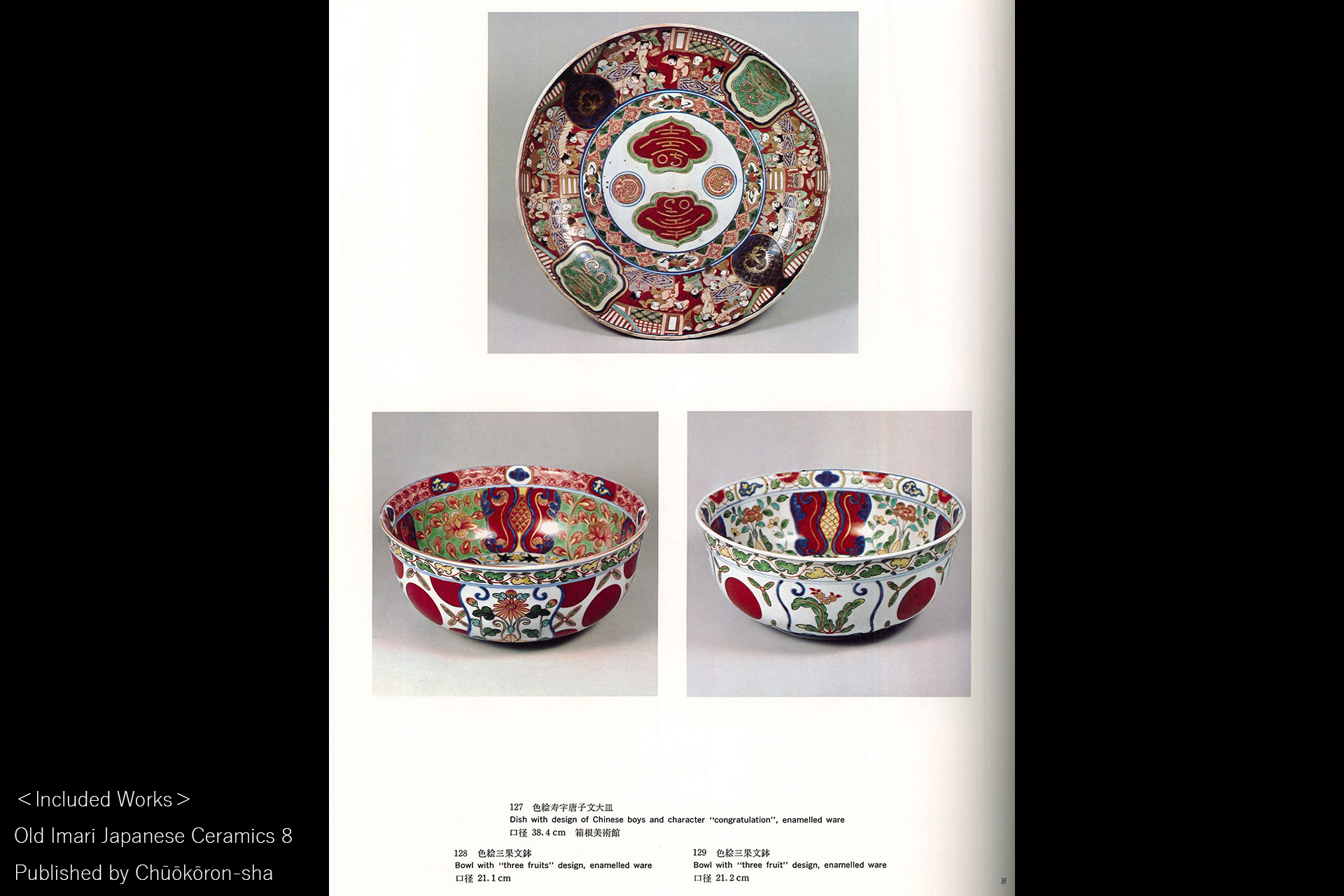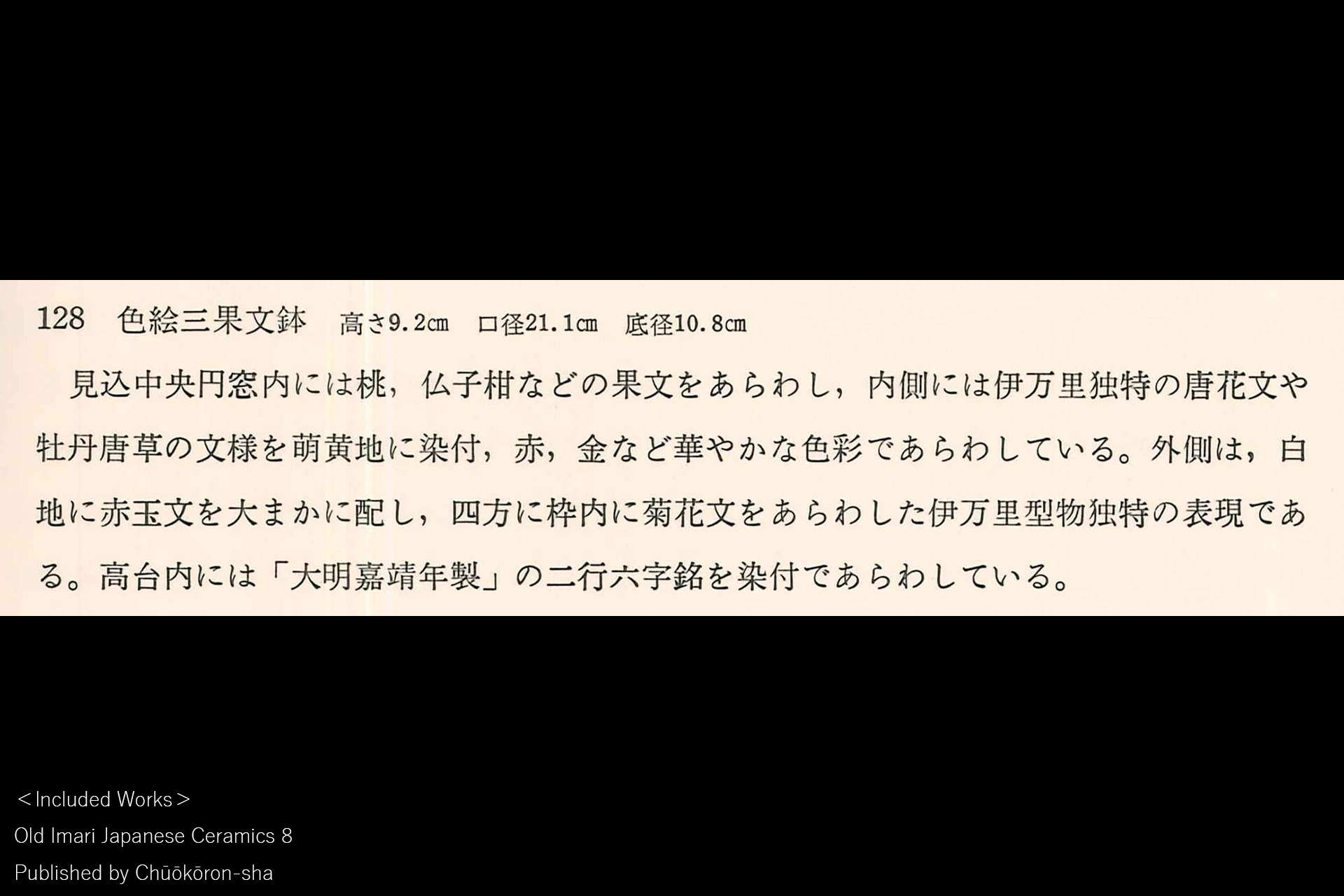Old Imari Bowl with Three Fruits Motif (Edo Period / Included Work)
1,000,000Yen(Tax Included)
This is a distinguished masterpiece of Old Imari, imbued with a solitary and commanding presence. Created for the affluent class—including feudal lords and wealthy merchants—it was highly prized as a confectionery bowl for tea gatherings, a celebratory gift, and a vessel for formal banquets. Setting itself apart from typical Old Imari, it embodies the opulence of the Genroku era (1688–1704), echoing the phrase “To know governance through ceramics”. Featured in the authoritative volume Japanese Ceramics Vol. 8: Old Imari, it bears the dignity of a true museum piece.
- Period
- Edo Period
End 17th Century-Early 18th Century
- Weight
- 1,053g
- Diameter
- 21.3cm
- Height
- 9.2cm
- Base Diameter
- 10.8cm
- Fittings
- Paulownia Box
- Provenance
- 「Old Imari Japanese Ceramics 8」, Published by Chūōkōron-sha, P86, No128, Included Works
- Condition
- Intact
The work exhibits a harmonious balance of robust form, refined glaze, and exceptional firing—qualities that fully meet the standards of a first-class work. While slight flaking of the green glaze is visible on the exterior, it does not detract from the overall aesthetic appreciation.
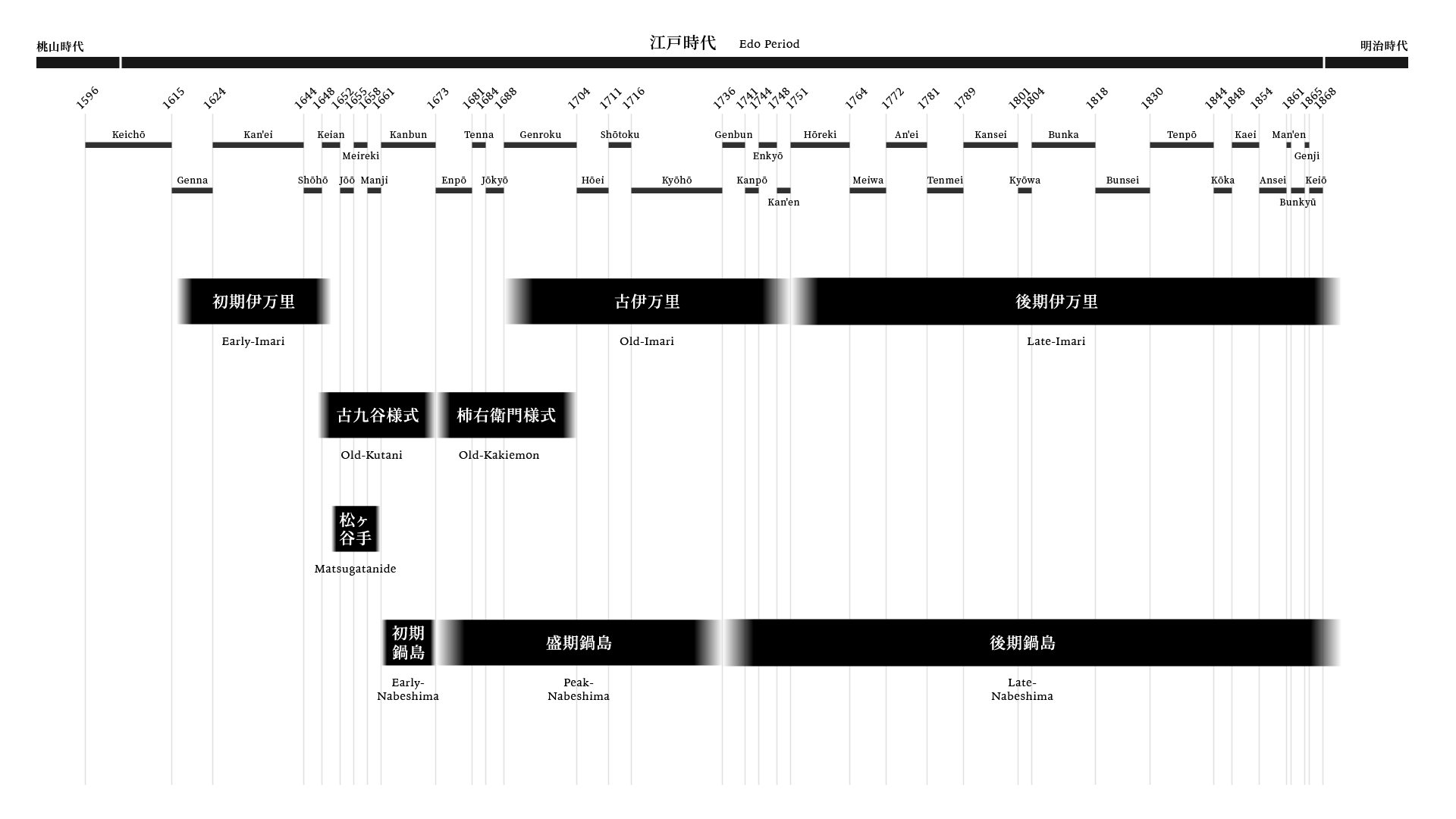
This is a finest example of Old Imari, referred to as jun-gata—a top-tier piece that closely follows the standards of Katamono. The Genroku era (1688–1704) marked an unprecedented period of economic prosperity, during which affluent merchants led a flourishing culture of opulence. Katamono produced in this era represent the pinnacle of Old Imari artistry and technical refinement.
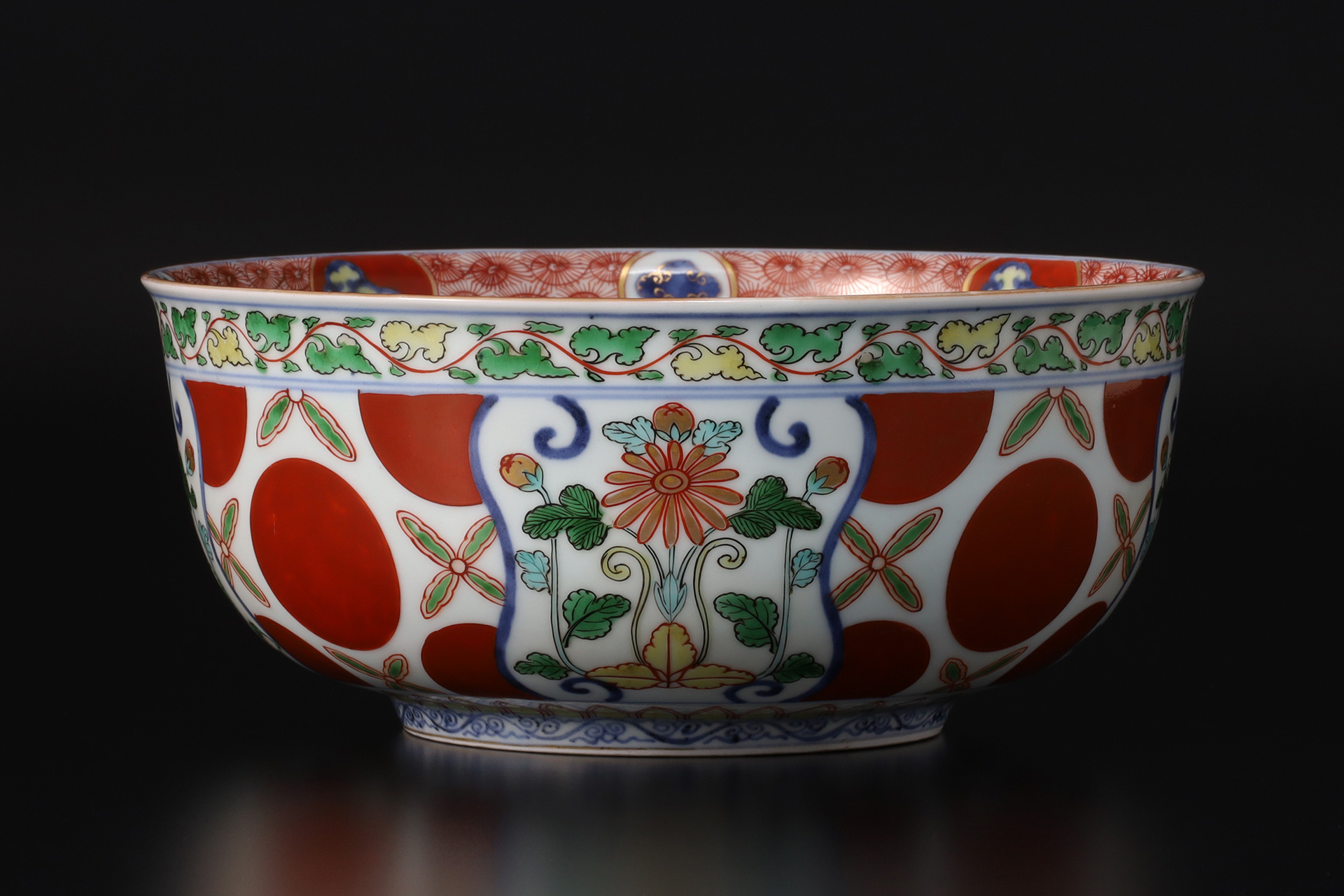
Based on the techniques of doucai and iro-Nabeshima—in which cobalt outlines are first applied in underglaze blue, followed by overglaze enameling within framed areas—the interior features a meticulously rendered Three Fruits motif: peach, pomegranate, and finger citron. Delicate brushwork and harmonious coloration lend a quiet radiance to the surface of the vessel.
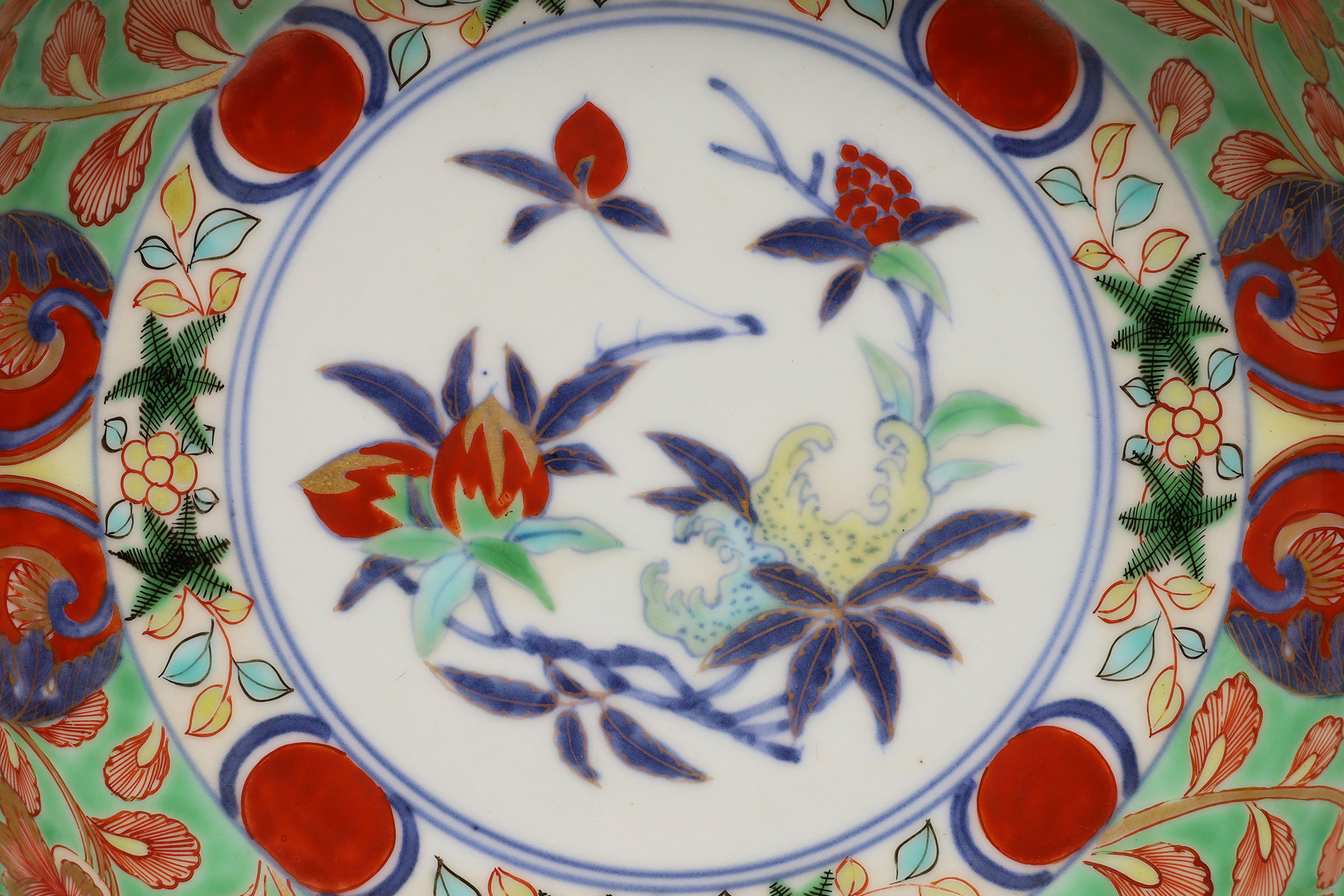
The deep, lustrous red roundels stand out with exceptional brilliance, evoking the aesthetic aspirations of Jiajing era Kinrande ware.
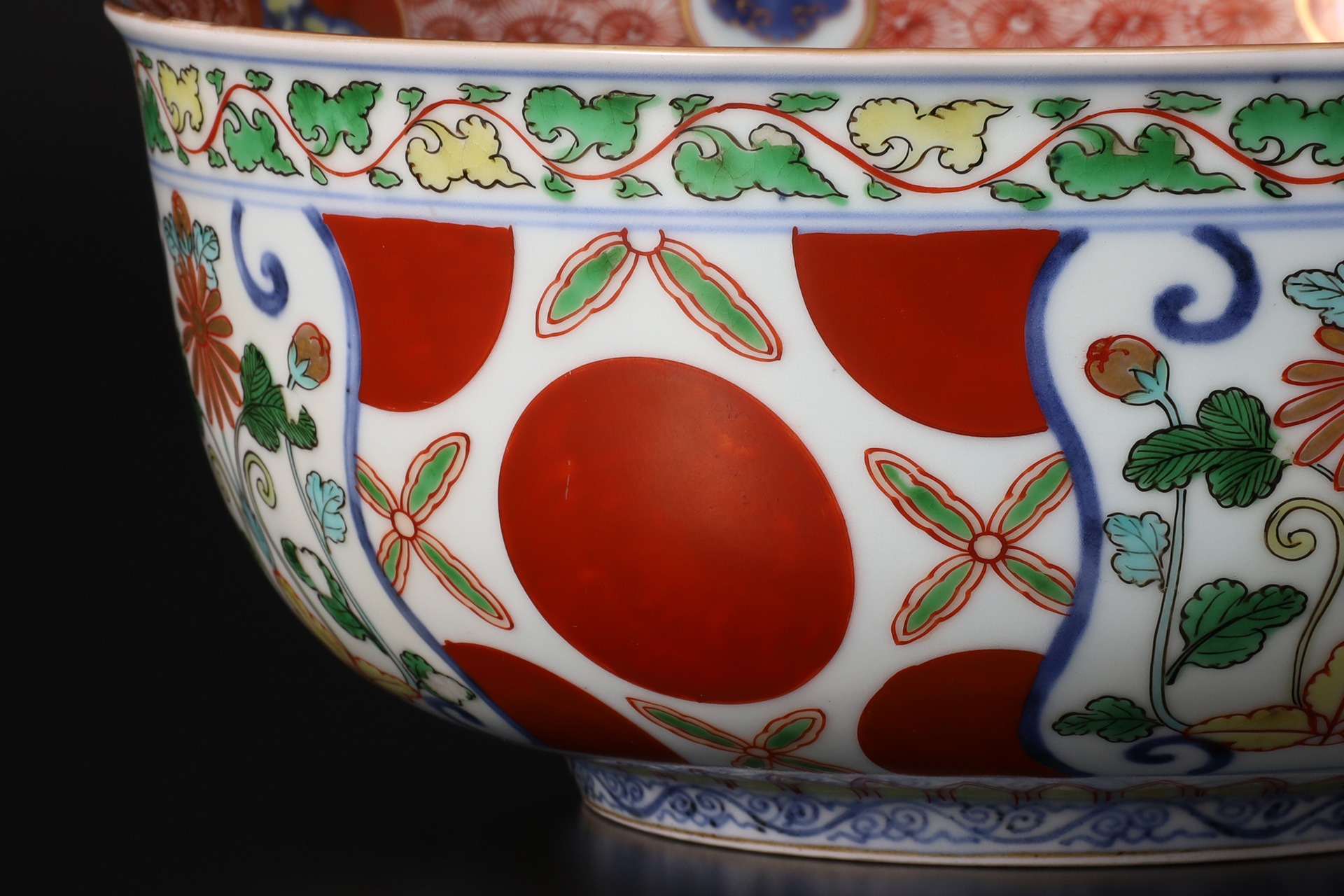
The peony motif blooming in green enamel resonates gracefully with the red overglaze decoration, further enhancing the dignity of the vessel.
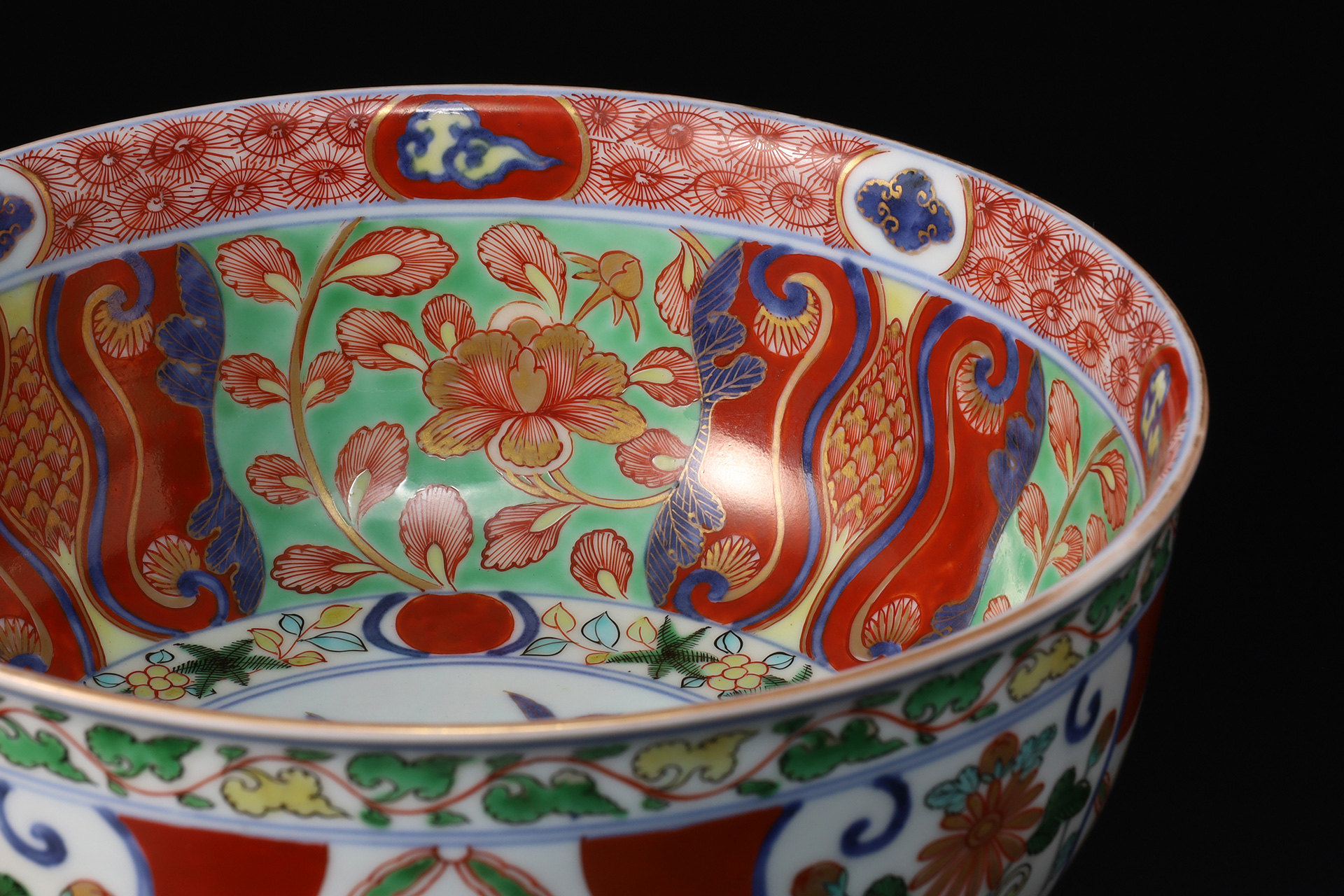
This distinguished piece is featured in the authoritative volume Japanese Ceramics Vol. 8: Old Imari, attesting to its esteemed provenance and cultural significance.
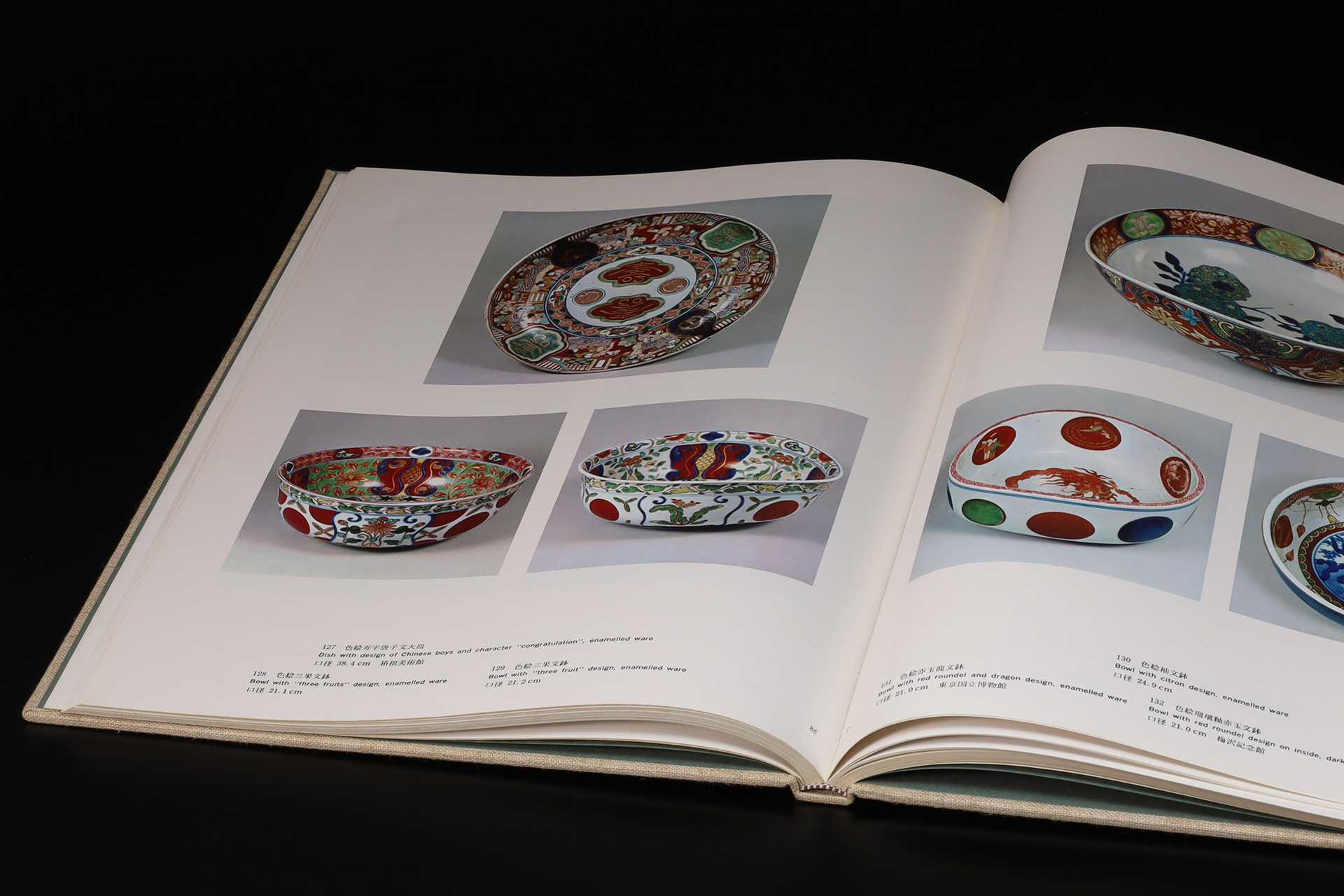
Old Imari
Old Imari is a collective term for porcelain fired in Arita, Hizen Province, during the mid-Edo period. While the domestic market favored dignified and well-balanced works—exemplified by Katamono (“masterwork that fits the mold of excellence”)—the core of production lay in export pieces, distinguished by elaborate designs that evoked exotic sensibilities. As Hizen porcelain came to be embraced by global markets as the finest alternative to Jingdezhen ware, a sophisticated division of labor among skilled artisans was established, enabling the high-quality mass production of ceramics. Among these, the opulent Kinrande style—featuring underglaze blue (sometsuke) layered with overglaze enamels and gilding—became emblematic of Old Imari, unfolding a world of elegant splendor that reflected the prosperity of the Genroku era (1688–1704). This decorative technique was perfected at the Jingdezhen kilns during the Jiajing reign of the Ming dynasty (1522–66), where gold leaf was fired onto porcelain surfaces to evoke a sense of opulence and refinement. In Europe, a vogue emerged among royalty and aristocrats for adorning palace interiors with porcelain, giving rise to the celebrated “Porcelain Rooms.” Porcelain came to be revered as a symbol of wealth and power. Old Imari wares that reached Europe were displayed not only as art objects on shelves and walls, but also served as elegant furnishings in reception spaces. As a result, many surviving pieces exhibit signs of age, such as wear to the overglaze enamels and gilding. Names such as “Old Imari,” “Old Japan,” and “Imari-yaki” remain beloved among collectors and connoisseurs both in Japan and abroad, attesting to the enduring reverence for Hizen porcelain.
https://tenpyodo.com/dictionaries/old-imari/
Katamono
“Katamono” refers to a distinguished group of Old Imari made for domestic use, characterized by rich coloration and Kinrande-style decoration. The term implies a “masterwork that fits the mold of excellence,” and pieces of comparable quality are sometimes referred to as jun-gata (“semi-katamono”). Notably, the term “Katamono” does not appear in Edo period documents and is believed to have become established in the Meiji period. Katamono stands apart from the mass-produced export Imari ware made for European markets. Instead, it fulfilled the refined demands of feudal lords and wealthy merchants, representing the highest echelon of Old Imari enamel decoration. Although not originally intended as offerings to the shogunate or regional domains, their exceptional quality earned them the honorary title kenjō-de (“presentation-grade pieces”). The designs are meticulously rendered and imbued with auspicious and narrative motifs, including red roundels with dragons, stormy seas (araiso), the immortal Kinkō riding a carp, five sailing ships, the character for longevity (kotobuki), treasure motifs (takara-zukushi), princess dishes (hime-zara), and ceremonial arrows (yumi-hama). The forms are equally diverse, encompassing round bowls, helmet-shaped bowls (kabuto-bachi), spinning-top-shaped bowls (koma-gata bachi), and flat bowls. Katamono pieces were treasured as confectionery bowls for tea gatherings, celebratory gifts, and vessels for formal banquets. Even after reaching their peak during the Genroku era (1688–1704), they continued to be produced as a major category of Imari ware. However, their quality gradually declined with the passage of time.
